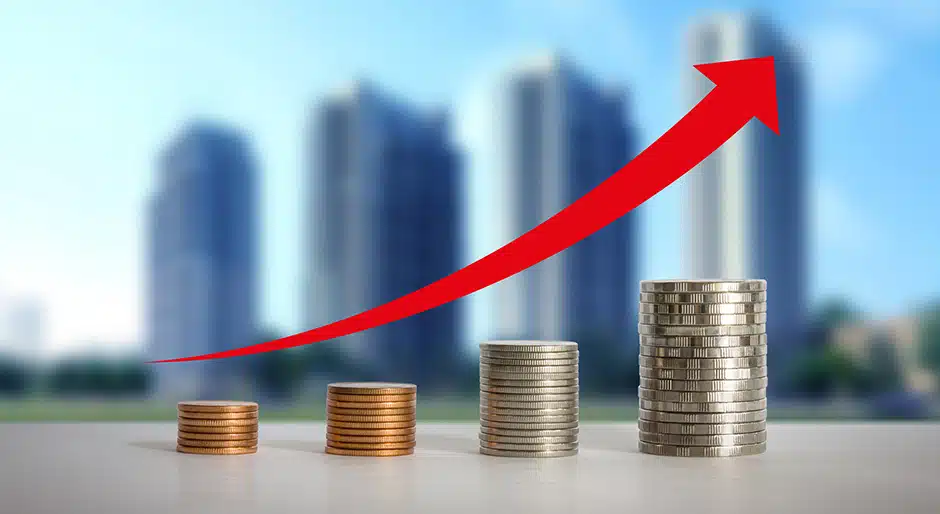Rising interest rates and debt investment
One element of the current environment that real estate investors, both equity and debt, are watching very closely is interest rates. The 10-year Treasury rate has increased approximately 60 basis points since November 2016, though it continues to be low by historical standards. And the Federal Open Market Committee has signaled a willingness to raise the target federal funds rate, with many expecting three increases by the Fed in 2017.
In simple terms, when interest rates are going up, it is better — for the investor — to lend with a floating rate rather than a fixed rate. In addition, a rising interest-rate environment may cause cap rates to increase, leading to falling property valuations.
“In a rising-rate environment, investment in floating-rate debt can provide a hedge,” says Dean Dulchinos, real estate portfolio manager at Barings Real Estate Advisers. “And likewise in a falling-rate environment, which we were in right after the global financial crisis, an investment in fixed-rate debt can provide a way to lock in higher returns for debt investors.”
Fung notes a real estate debt component can be adaptable to floating and fixed rates. “If you have a rising-rate environment, you can craft or invest in real estate debt that is floating rate, so you are hedged,” says Drew Fung, managing director and head of debt investment with Clarion Partners. In addition, debt investors have some cushion, in the form of equity subordination, in a market where values are declining.
“In a floating-rate portfolio, rising rates will benefit debt investors. Since rising rates — and corresponding rising cap rates — are likely to have the opposite effect on equity investors, having debt in the portfolio is a logical ‘hedge’,” agrees Ryan Krauch, principal of Mesa West Capital.
According to Bert Crouch, managing director at Invesco Real Estate, the effect of rising interest rates will be fairly binary, depending on the type of strategy being employed. “Simply put, rising rates will positively benefit the return profile of short-term floating-rate credit origination strategies, with the caveat that debt-service coverage ratios will potentially be impacted,” says Crouch. “On the other hand, long-term fixed-rate strategies would be significantly impacted by increasing rates given the adverse mark-to-market implications. Private lenders relying on debt-on-debt leverage to achieve their target returns may also be negatively affected, especially relative to those co-originating subordinate debt with senior lenders.”
One concern of a rising-rate environment is whether it will affect property values negatively. “Commercial real estate has historically acted as a portfolio inflation hedge, due to the ability to reset rents upward in an inflationary environment,” says Crouch. “Cap rates do not move in lockstep with interest rates, nor does private real estate move in lockstep with the public markets. Accordingly, simply targeting well-collateralized floating-rate loans in supply-constrained submarkets will provide for rising income yields, while limiting adverse exposure to collateral value decreases as Treasury rates potentially rise.”
“Yes, cap rates are nominally low in a historic context, but the spread differential between nominal cap rates and Treasuries is wide in a historical context,” says Tom Mattinson, executive vice president at Quadrant Real Estate Advisors. Therefore, he expects some elasticity as interest rates rise and for cap rates to continue to hold relatively firm. In addition, he notes, commercial real estate is still viewed as a safe haven asset class by both domestic and offshore investors.
In fact, interest rates may need to rise significantly to have an impact on property values.
“In our view, interest rates would have to move an additional 100 basis points from their current 2.5 percent to 2.6 percent range before all risk assets, including real estate, begin to materially reprice,” says Michael Roch, managing director and senior portfolio manager with MetLife Investment Management’s Real Estate Debt Strategies Group. He adds, for a commercial loan underwritten at 65 percent leverage, collateral values must fall 35 percent or more before the commercial mortgage holder is affected. “The most severe stress in the past 40 years came during the 2007–2008 global financial crisis, during which property values fell 32 percent from peak to trough,” explains Roch. “Yet, even when factoring in such stress, a decline in values does not necessarily mean a default if the property is generating sufficient cash flow to pay its commercial mortgage loan debt service.”
“We’ve been in this prolonged, very low interest-rate environment at a time when economic growth has been OK but not off the charts. It has ultimately been the drug we’ve all become addicted to,” says Mattinson, “but we have to get back to a more normalized interest-rate environment that is higher than what we are in today but that, at the same time, is supported by genuinely good fundamental economic growth. And in this scenario, the market will experience rising net operating income, which is a positive for property values.”
This article appears in the April issue of Institutional Real Estate Americas. For more information on this magazine or to sign up for a trial subscription, click here.

